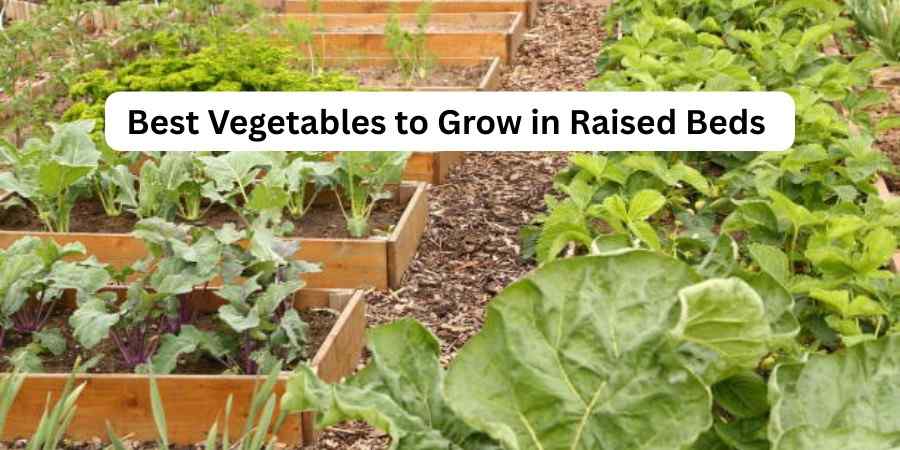When it comes to growing food in your backyard, using raised gardening spaces can offer a great solution. Whether you have a small garden or a suburban plot, this method is an efficient way to grow your favorite vegetables and greens.
It’s especially helpful for those with clay or poor soil, as it allows better soil control and improved drainage. These elevated beds create a perfect oasis for your crop and make planting easier, especially for beginners or green-thumbed gardeners.
By using this setup, you can focus on crop rotation and incorporate fertilizers to boost the fertility of the soil, leading to more productive plants. The soil’s fast-draining nature is also ideal for growing tomatoes, peppers, carrots, and melons.
With a little effort, you can enjoy a bountiful harvest of fresh, homegrown produce from your own garden.
Table of Contents
Toggle10 Best Vegetables to Grow in Raised Beds
Raised beds offer great conditions for growing vegetables. Let’s discuss in detail which vegetables grow best and how raised bed gardening helps plants.
1. Bush Beans
Bush Beans are one of the best vegetables for a raised bed, especially in late spring when the soil begins to warm up. These compact plants are known for their quick growth and easy care.
Varieties like ‘Provider’ and ‘Contender’ are often chosen for their fast germinate rate in soil temperatures around 60 degrees F. Since they are tender and can’t handle frost, they should be planted only after the cold has passed.
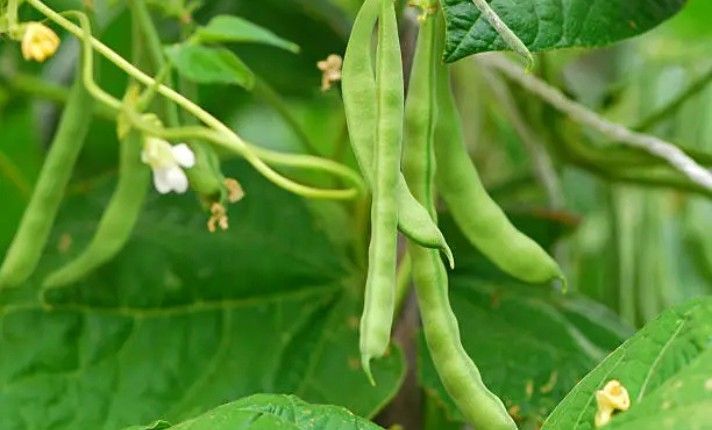
Sow the seeds directly in well-draining soil to avoid issues from wet soil. The round pods usually mature in 50 to 55 days, making them ideal for a fast turnaround time. As legumes, they enrich the soil with nitrogen, making them beneficial for subsequent crops in a planting rotation.
Bush beans also support a healthy start for the season and bring great appreciation for garden growth. For those planning a long season, another round of seeding in mid-summer can extend the crop. Blue Lake is another reliable type to grow during the warm season outdoors.
2. Sweet and Hot Peppers
Peppers are excellent choices for raised beds because they need good sunlight exposure and well-draining soil to grow well. For sweet peppers or hot peppers, the right temperature range is essential.
Ideally, they need warm soil, with temperatures around 60 to 90°F for the best growth. These plants are sun-lovers that require plenty of light and water management to prevent them from drying out.
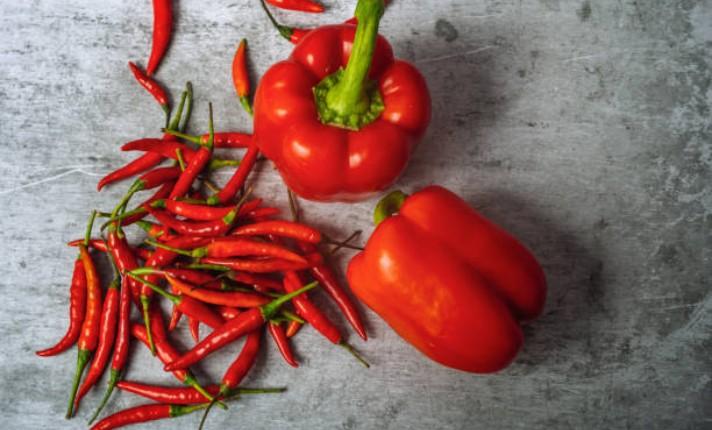
It’s important to mulch with straw or similar materials to retain moisture in the soil and protect their roots. When transplanting seedlings, make sure the soil is not too cold (below 55°F) as peppers are sensitive to frost.
The growing season can vary depending on the type of pepper, but both hot and sweet peppers typically mature in about 8 to 10 weeks after transplanting.
With careful garden care, these plants will reward you with vigorous growth and a bountiful harvest of flavorful peppers for your home garden.
3. Tomatoes
Tomatoes grow well in raised beds because the soil is loose and good for the root system. Sungold tomatoes are sweet and perfect for small spaces. They need stakes or heavy-duty tomato cages for support.
The Brandywine variety grows bigger and needs about 7 feet of space. You can use tomato seedlings or transplanted tomatoes. Be sure to bury part of the stem for stability. Adding basil or marigolds as companion plants helps protect tomatoes from pests like aphids and nematodes.
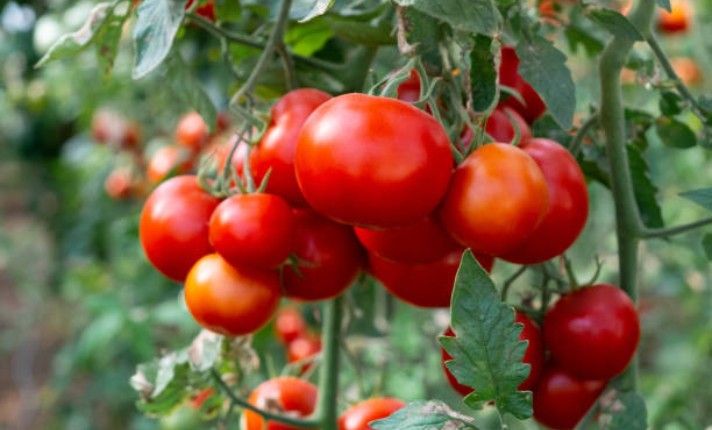
For determinate tomatoes like Roma, they stay smaller and reach about 3 to 4 feet tall. Water them carefully, making sure not to let the soil get wet.
Providing nutrients will help them grow strong. With the right care, you can enjoy flavorful tomatoes in about 6 to 8 weeks.
4. Cucumbers
Cucumbers grow well in raised beds because these beds warm the soil faster, especially in cold climates. For zone 4a, start with plant starts or seedlings indoors and transplant once the soil temperature reaches 70 degrees F.
You can also direct sow if the weather is warm enough. Cucumbers need a trellis for support as they are vining plants, so use an A-frame trellis, tomato cages, or even a basic trellis to help them grow vertically.
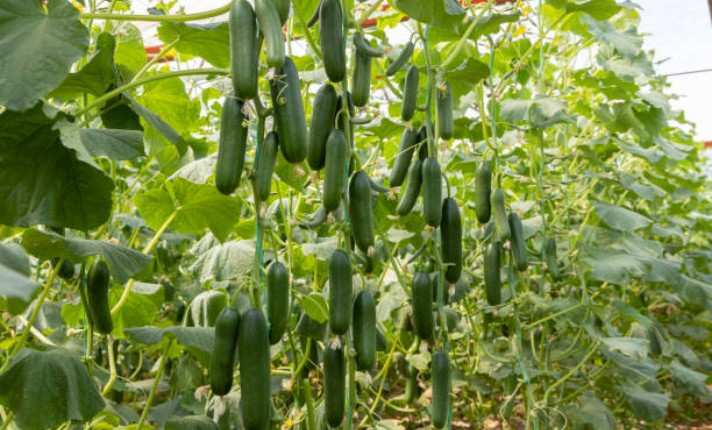
This saves space and keeps the fruits off the ground, reducing the risk of diseases. To encourage growth, prune the vines and be mindful of insects. Make sure to plant near the bed edges for room to grow, and keep the soil moist for the best results.
5. Carrots
When growing carrots in raised beds, it is important to consider the soil and depth. Carrots need deep soil to grow their long roots properly. Ideally, the soil should be at least 12 inches deep, but 9 inches could also work for stubby varieties like Chantenay or Parisian.
To achieve uniform growth, make sure the soil is loose and free of rocks and pebbles, which can cause the roots to grow crooked. Raised beds with moist, well-drained soil, like a mix of dill and clay, are perfect for these root crops.

Plant carrot seeds directly into the soil for the best results. You can also include companion plants like onion and radishes, which help protect your carrots from pests such as carrot flies and wasps.
For longer carrots like Imperator 58 or Danvers 126, the soil should be at least 8 inches deep. Finally, keep an eye out for helpful insects like ladybugs and use a fork to keep pests at bay and promote healthy carrot growth.
6. Leafy Greens
Leafy greens are ideal for raised beds because they don’t require much space. Fast-growing varieties like lettuce, spinach, and arugula can be planted in early spring, providing quick harvests for fresh salads.
For winter harvests, try mustard greens or kale, which handle cool weather well. Collard greens and swiss chard also grow well in compact spaces, especially along the edges of the beds.
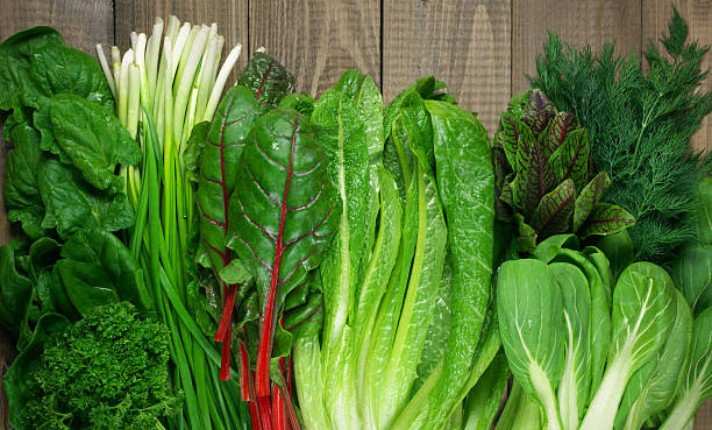
Use interplanting to maximize your garden space, and add compost for rich soil. With the right care, your leafy greens can grow throughout the season.
7. Melons
Melons, like watermelons, cantaloupe, and honeydew, grow best in raised beds. Start by sowing melon seeds indoors 3 to 4 weeks before the last anticipated frost. Use well-draining and loose soil for strong root growth.
After the frost, transplant seedlings into deep soil (12 inches) and ensure the temperature is at least 70 degrees F for optimal growth.
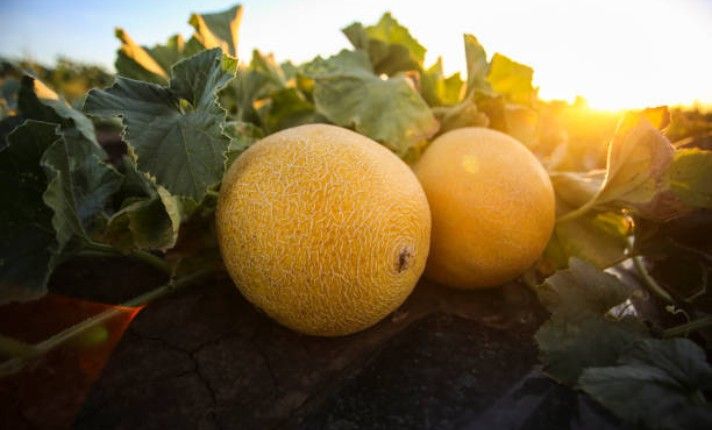
Melons need strong support, such as an A-frame trellis for their vining nature. They usually take 50 to 55 days from seeding to harvest in late summer.
8. Egg Plant
Proper space management and soil conditions are key. You can also plant bush beans nearby, but be careful with space.
Eggplant grows well in raised beds where the soil warms up quickly. Wait until the soil reaches about 70 degrees F before planting, after the last frost. Eggplant transplants prefer warm soil and should not be planted in cold soil or during frost.
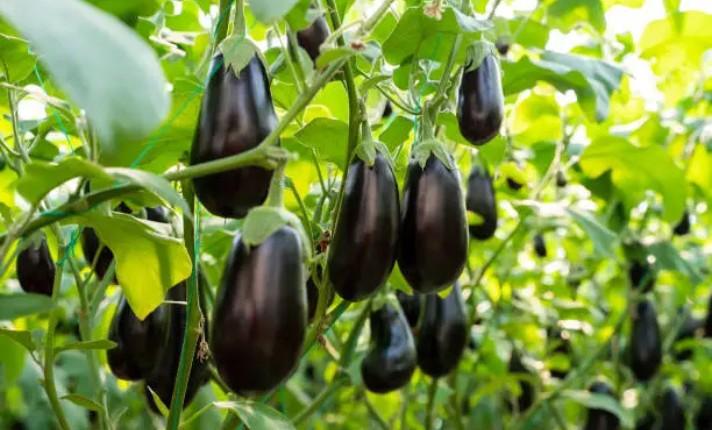
Black plastic sheeting can help pre-warm the soil and protect against the cold. Space the plants well and use tomato cages for support.
Water regularly but avoid overwatering, as eggplants don’t like wet roots. Raised beds improve air flow and water drainage, keeping the plants healthy. Adjust watering based on spring rains.
9. Sweet Potatoes
Sweet potatoes grow well in raised beds with well-draining soil. Plant seed potatoes or slips after the last spring frost when the soil reaches 50 degrees F.
These plants are sensitive to cold and need warm soil. Sweet potatoes take long to develop, so wait for about 3 to 4 weeks before the first frost.
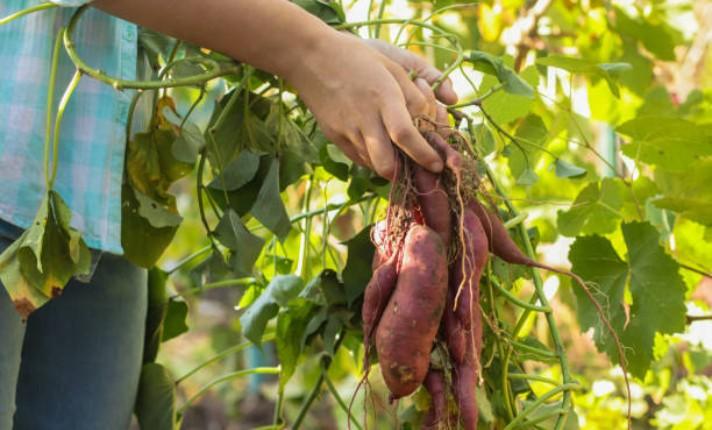
As they grow, you may need to cut back the leaves if they graze nearby plants. The tubers will form underground and provide a good-sized crop ready for harvest.
10. Summer Squash
Summer squash grows well in raised beds, especially when planted in spring after the last frost. These plants prefer soil temperatures of around 60 degrees. Beans are a great companion because they help fix nitrogen in the soil, improving the growing conditions for squash.
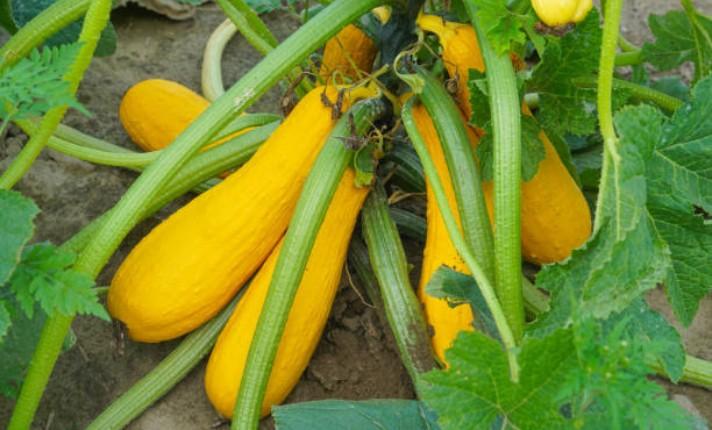
Plant the seeds directly in the bed, and the small, tender plants will start growing. You’ll have a quick harvest, and the skins are soft and edible right after picking. Make sure to harvest before the expected frost returns.
Best Vegetables for Specific Raised Bed Situations
Choosing the right vegetables for your raised bed can help make gardening easier. Below is a table that shows the best vegetables for different raised bed situations.
| Raised Bed Situation | Best Vegetables |
| Growing in Pots and Containers | Tomatoes, Peppers, Herbs |
| Low-Maintenance Raised Bed Gardening | Leafy Greens, Radishes, Herbs |
| Year-Round Raised Bed Gardening | Kale, Spinach, Winter Lettuce |
3 Worst Vegetables in Raised Beds
Some vegetables struggle in raised beds due to deep roots or wide spacing requirements. These plants may not grow well if the space is too tight or the soil is not deep enough.
1. Corn
Corn grows best in a large block instead of rows for effective pollination. Since it’s wind-pollinated, a raised bed should be large enough to accommodate several corn plants.
A block of corn allows the wind to reach all the plants for sufficient pollination. Small spaces won’t work well for corn, as the plants need enough room to grow. With a spacious raised bed, corn plants can grow better, similar to those in in-ground gardens.
2. Vining Plants
Vining plants like watermelons, pumpkins, and squash need plenty of space to grow. Their vines can stretch over 20+ feet, spreading in all directions. While they offer quick growth, they can easily take over the garden, creating a mess.
To manage them, provide enough space or use a trellis to control their spread and keep them from shading other plants. With careful planning, these large vining plants can thrive in raised beds without becoming overwhelming.
3. Large Perennials
For raised bed gardening, perennial plants like asparagus and rhubarb are ideal. They offer year-round growth and are hardy, requiring less replanting. These edible plants can grow in the same spot for years, promoting long-term growth and sustainable gardening.
By planting them in the corner of your raised bed, you can maximize space utilization and reduce the risk of them taking over. This method helps keep your garden productive while maintaining soil health for future seasons.
Why Choose Raised Beds for Growing Vegetables?
Raised beds make gardening simpler and more effective. They improve soil quality, give more control, and help both plants and people. Here’s how raised beds support better vegetable growing from start to finish.
· Superior Soil & Better Drainage
In raised beds, you build your own custom soil using compost-heavy blends, which improves workability and helps with drainage improvement. Whether your yard has clay, sandy soil, or is rocky, raised beds fix the issue by offering a tailored and loose mix.
· Warmer Soil &Longer Growing Time
The elevated setup holds heat better, giving you warmer soil in early spring. This extends the growing time and makes spring planting easier in a cold climate or wet yard.
· Comfort & Ease of Use
Raised beds reduce bending, helping with knee pain, joint pain, and back strain. If you have mobility issues or physical limitations, they offer true ergonomic gardening and more comfort during planting or harvesting.
· Less Weed Pressure & Natural Pest Barriers
With a defined structure, raised beds lower weed pressure and make weed management simpler. You can use chicken wire, netting, or insect barriers for pest prevention, keeping plants safe with less effort.
· Design Flexibility & Visual Appeal
The modular build of raised beds helps with garden planning and fits into small or front yard spaces. You can design for vertical gardens, add a neat border, and boost aesthetics while meeting your gardening goals.
· Easier Maintenance & Better Plant Health
With reduced weeding, easy regular watering, and fewer pests, raised beds offer ease of use and improve plant health. You also avoid compacted soil and contaminated patches, giving your plants the best spot to grow.
Tips for Sowing and Growing in Raised Beds
Creating the right environment for vegetables in raised beds involves a thoughtful mix of soil care, consistent watering, and pest management.
By providing these key elements, your plants can grow strong and healthy. Factors such as proper spacing and water retention can greatly influence the success of your vegetable garden.
Check out the table below for some important tips to help you sow and grow vegetables effectively.
| Tip | Details |
| Soil Preparation | Use organic compost, mulch, and test soil pH. Add worms to improve aeration and fertility. |
| Watering Techniques | Implement soaker hoses for even watering, check soil moisture regularly, and use mulch to retain moisture. |
| Pest Control | Apply companion planting (like marigolds) to deter pests and use organic pest management solutions. |
| Plant Spacing | Follow seed packet instructions for planting depth and spacing to ensure healthy growth. |
Design and Layout Tips for Raised Beds
Creating a well-planned raised bed garden is essential for maximizing space and ensuring accessibility. A proper layout will help boost productivity and make maintenance easier.
· Layout and Pathways
Keep narrow pathways between raised beds to avoid stepping on the soil, which could lead to compacted soil. Use materials like stepping stones or mulch to define these pathways, which also helps with drainage and easy movement.
· Vertical Gardening
Use vertical planters or trellises for climbing plants like beans and tomatoes to save space. This helps with growth without overcrowding the ground, especially in smaller gardens.
· Plant Placement
Arrange plants in staggered rows to improve airflow and reduce the risk of disease. Consider the mature size of each plant, like broccoli or carrots, to avoid overcrowding and ensure healthy growth.
· Soil Considerations
Raised beds need well-draining soil. Add compost to improve drainage and keep the soil loose, which helps plants like onions and cucumbers grow well.
· Container Gardening
Use containers for growing smaller plants like blueberries or herbs, allowing for an integrated approach while saving space in your raised bed.
FAQ’s
Q: What Is the Best Veg to Grow in Pots?
A: The best vegetables to grow in pots are bush beans, cucumber, and zucchini. These plants do well in containers as they don’t need deep soil for their roots. Swiss chard and romaine lettuce also grow well in pots, providing fresh greens for salads.
Q: What Is the Best Filler for Raised Beds?
A: The best filler for raised beds combines carbon-rich materials like wood chips and dried leaves, with nitrogen-rich materials like grass clippings and kitchen scraps.
Layering these materials, starting with cardboard or newspaper for weed suppression, creates a balanced environment that promotes healthy plant growth.
Q: What Is the Cheapest Method for Raised Beds?
A: The cheapest method for raised beds is using recycled materials like wood from old pallets, cinder blocks, or even tires.
These materials are often free or very low-cost, making them a budget-friendly choice for creating sturdy and functional raised garden beds.
Q: What Is the Best Height for a Raised Bed?
A: A 24-inch raised bed is ideal, providing the depth needed for healthy root depths. It’s manageable for gardeners, cost-effective, and accommodating for a wide variety of plants, offering the best balance of comfort and growth.
Q: What Is the Best Size for Raised Vegetable Beds?
A: The best size for raised beds is two feet to four feet in width, allowing easy access from all sides. The length should be 6 to 8 feet to provide enough growing space without being too hard to manage.
Q: What Fruit Grows Best in Raised Beds?
A: Muskmelon, watermelon, cantaloupe, and honeydew melon grow well in raised beds due to their need for plenty of space and warmth. Pumpkins and gourds also do well, benefiting from the loose, well-drained soil and extra heat in raised beds.
Conclusion
From my own experience with raised bed gardening, it has completely changed the way I approach gardening. The convenience of elevated plots has made a big difference, with no more hard digging or bending down to work the soil.
I’ve had great success with crops like tomatoes, peppers, and leafy greens, all growing well with minimal effort. With careful planning, the right garden tools, and good soil, I’ve found it’s a sustainable and enjoyable way to grow fresh produce.
If you’re ready to get started, try raised bed gardening and enjoy the rewards of a garden that’s easy to manage.
